There’s something deeply satisfying about biting into a spring roll. That perfect blend of crunchy exterior with a burst of flavorful fillings has made it a beloved dish across continents. While many associate spring rolls with Asian cuisine, its versatility and adaptability have paved the way for various interpretations across cultures.
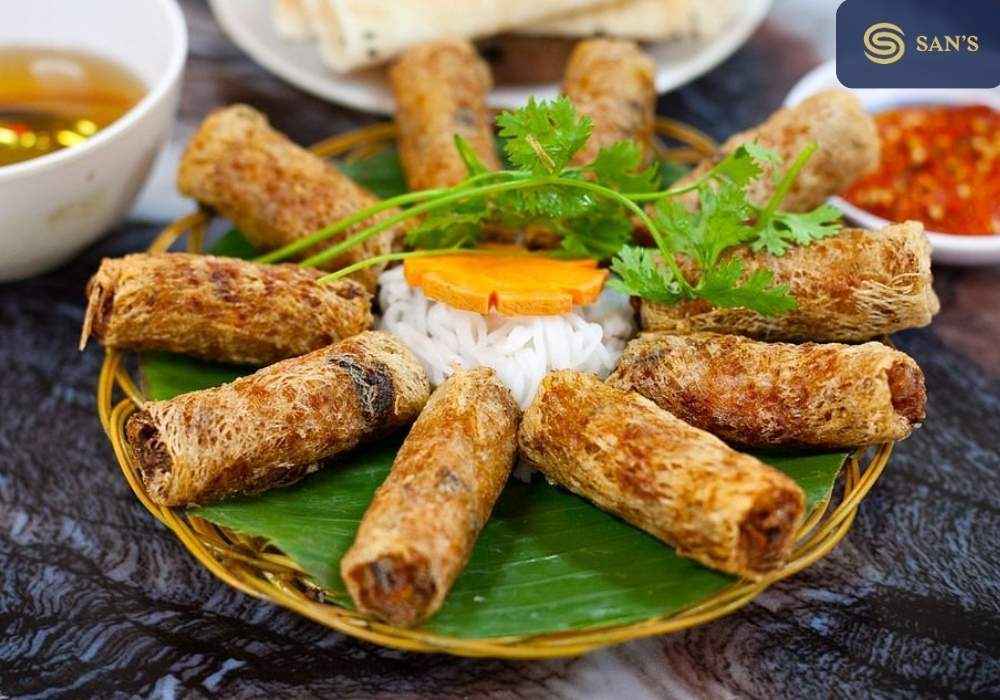
Whether you’re savoring the crispy, golden-brown rolls found in Chinese restaurants or the fresh, herb-filled delights from Vietnamese eateries, there’s a version of the spring roll for every palate. This article dives deep into the world of spring rolls, offering a glimpse of its diverse iterations and guiding you through the art of crafting the perfect roll at home.
Whether you’re a seasoned chef or a culinary newbie, by the end, you’ll gain a deeper appreciation for this timeless snack and the stories it carries from every corner of the globe.
Essential Ingredients for Making Spring Rolls
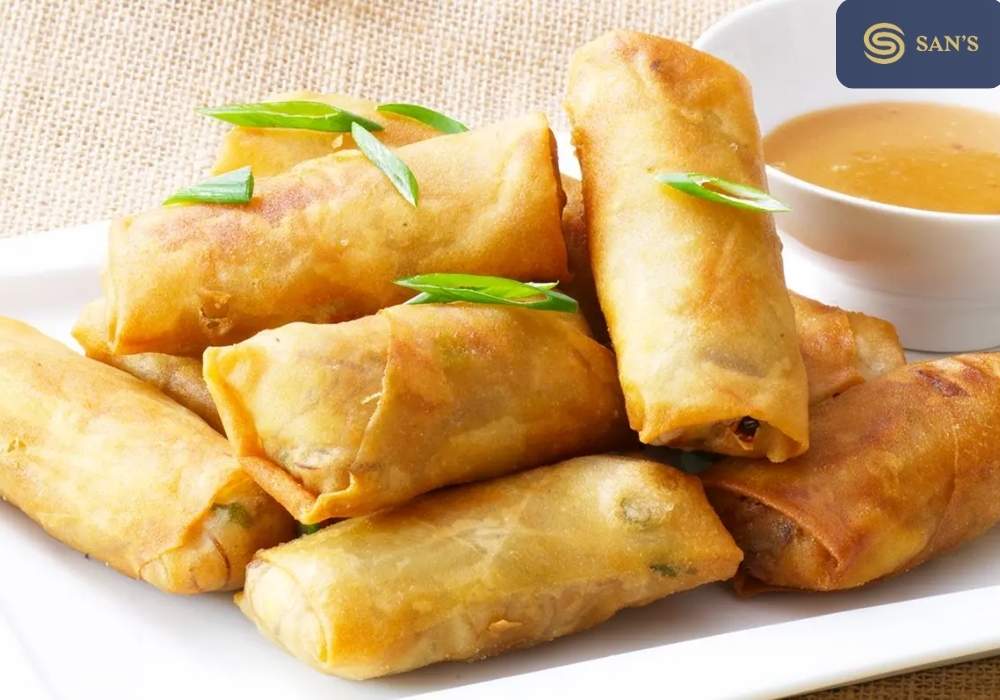
One of the reasons spring rolls have found their place in the heart of food enthusiasts worldwide is their adaptability. At the core of this delightful dish are some key ingredients, which, when chosen with care, elevate the entire spring roll experience. Let’s delve into these essentials:
- Rice Paper or Spring Roll Wrappers: The outermost layer of a spring roll is its defining feature. For fresh Vietnamese-style rolls, thin, translucent rice papers are used. When soaked in water, they become pliable, ready to be rolled with the fillings. On the other hand, for crispy, fried variants, typically found in Chinese or Thai cuisine, you’d go for the spring roll wrappers, which brown and crisp up beautifully when fried.
- Fillings:
- Proteins: The choice of protein can make or break your spring roll. Common favorites include succulent shrimp, tender pork slices, juicy chicken, or, for a vegetarian twist, firm tofu. Marinate them well, and ensure they’re cooked just right before they find their way into the roll.
- Vegetables: The freshness of the veggies adds a refreshing crunch to every bite. Lettuce forms a crisp base, while fresh herbs like mint, basil, and cilantro introduce bursts of flavor. Vermicelli noodles, when added, provide a delightful chewy contrast.
- Dipping Sauces: A spring roll’s best companion is its dipping sauce. The rich and creamy peanut sauce, often with a tamarind base, adds depth with its savory-sweet profile. The hoisin sauce, thick and fragrant, is another crowd-pleaser. For those who prefer a tangy kick, the fish sauce variant, often mixed with lime, garlic, and chilies, provides a mouth-watering dip. Of course, with the rising demand for vegan dishes, many restaurants now offer vegetarian versions of these classic dips.
Preparing the Fillings
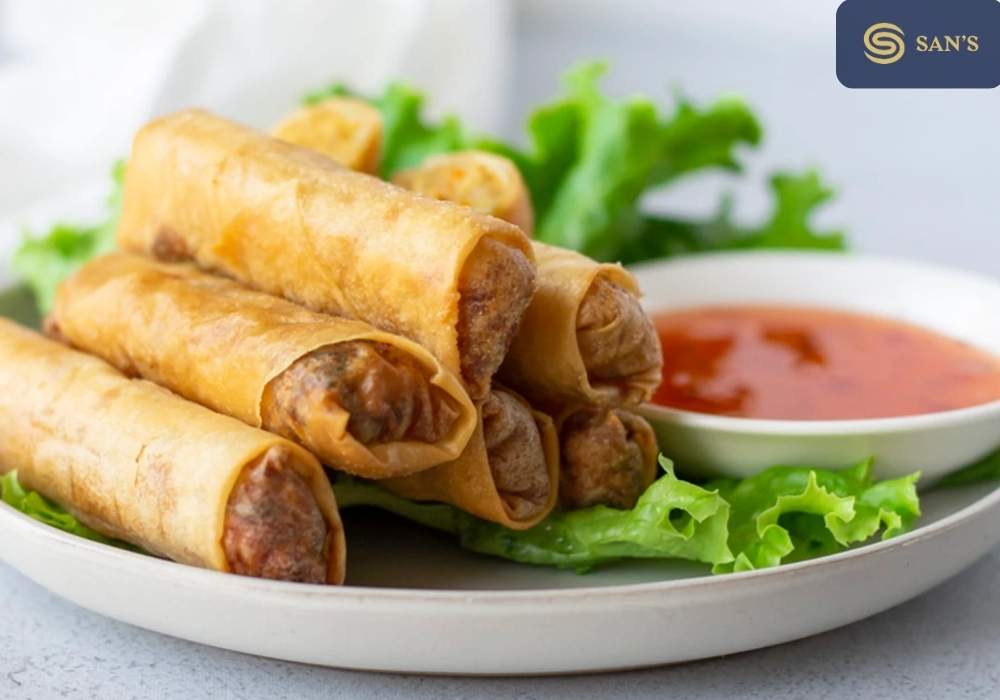
When crafting the perfect spring roll, the quality and flavor of the fillings play a pivotal role. Here’s a guide to ensuring your fillings are flavorful, fresh, and cooked to perfection:
- Marinating Proteins:
- Infusing Flavors: Begin by choosing a suitable marinade that complements your protein choice. Common ingredients for a marinade include soy sauce, sesame oil, garlic, ginger, and a hint of sugar or honey for balance. For seafood, consider adding a splash of lime or lemon juice.
- Duration: Marinating times can vary. For tender meats like chicken or seafood like shrimp, 30 minutes to an hour is sufficient. However, tougher meats like pork might benefit from a longer marination, even overnight, to fully imbibe the flavors.
- Refrigeration: Always marinate your proteins in the refrigerator. This ensures the meat remains fresh while soaking up the flavors of the marinade.
- Prepping Vegetables:
- Washing and Drying: Rinse your vegetables under cold water to remove any dirt or residues. Use a salad spinner or pat them dry with paper towels. It’s vital to ensure they’re dry before rolling to avoid a soggy spring roll.
- Cutting Techniques: Vegetables like carrots can be julienned or grated for a finer texture. Lettuce should be torn by hand to prevent browning edges, while herbs can be left whole or coarsely chopped.
- Retaining Freshness: Once cut, store the vegetables in an airtight container or a resealable bag in the refrigerator. If prepping ahead, consider placing a paper towel in the container to absorb excess moisture.
- Cooking Fillings:
- Ensuring Even Cooking: When cooking proteins, especially meats, ensure they’re in even-sized pieces or slices. This guarantees uniform cooking.
- High Heat for Quick Cooking: For proteins like shrimp or thin slices of meat, high heat ensures a quick sear while retaining moisture and flavor. Consider using a wok or a skillet for this.
- Taste as You Go: Always taste your fillings before rolling them into the spring rolls. Adjust seasonings if needed. Remember, a flavorful filling makes for a delightful spring roll.
The Rolling Technique

Creating the perfect spring roll not only depends on the flavor of the fillings but also on the technique of rolling. A well-rolled spring roll is tight enough to hold all its ingredients snugly, yet gentle enough to prevent the delicate rice paper from tearing. Let’s delve into the nuances of this art:
- Properly Hydrating the Rice Paper:
- Choosing the Right Water Temperature: Use warm water, not boiling or too hot. This ensures that the rice paper becomes pliable without turning too sticky or mushy.
- Duration: Submerge the rice paper in water for about 5-10 seconds. It will still feel slightly firm when taken out but will continue to soften as you add the fillings.
- Drying Off: After removing from water, lay the rice paper flat on a damp cloth or a wooden board for a few seconds. This prevents it from sticking and makes it easier to roll.
- Layering Ingredients: Sequence and Proportions:
- Starting with Lettuce: A leaf of lettuce not only adds crunch but also acts as a barrier, preventing the sharper ingredients from piercing through the rice paper.
- Proteins Next: Place your chosen protein on the lettuce. This ensures that when you finally bite into the roll, the meat or shrimp is front and center.
- Toppings and Fillers: Add vermicelli noodles, herbs, and other vegetables on top. Ensure not to overstuff, as this makes the roll harder to seal and more likely to tear.
- Maintaining Proportions: Ensure a balanced proportion of each ingredient in every roll for a consistent taste and texture.
- Mastering the Roll: Ensuring a Tight, Yet Gentle Wrap:
- Starting the Roll: Begin by folding the edge of the rice paper closest to you over the fillings.
- Tucking in the Sides: After the initial fold, tuck in the sides of the rice paper, akin to wrapping a burrito. This prevents ingredients from falling out during the subsequent rolls.
- Finalizing the Roll: Continue rolling forward while applying gentle pressure to ensure a tight seal without any air pockets. Remember, it’s a balance between firmness and gentleness to avoid tearing the rice paper.
Frying vs Fresh: Different Ways to Serve
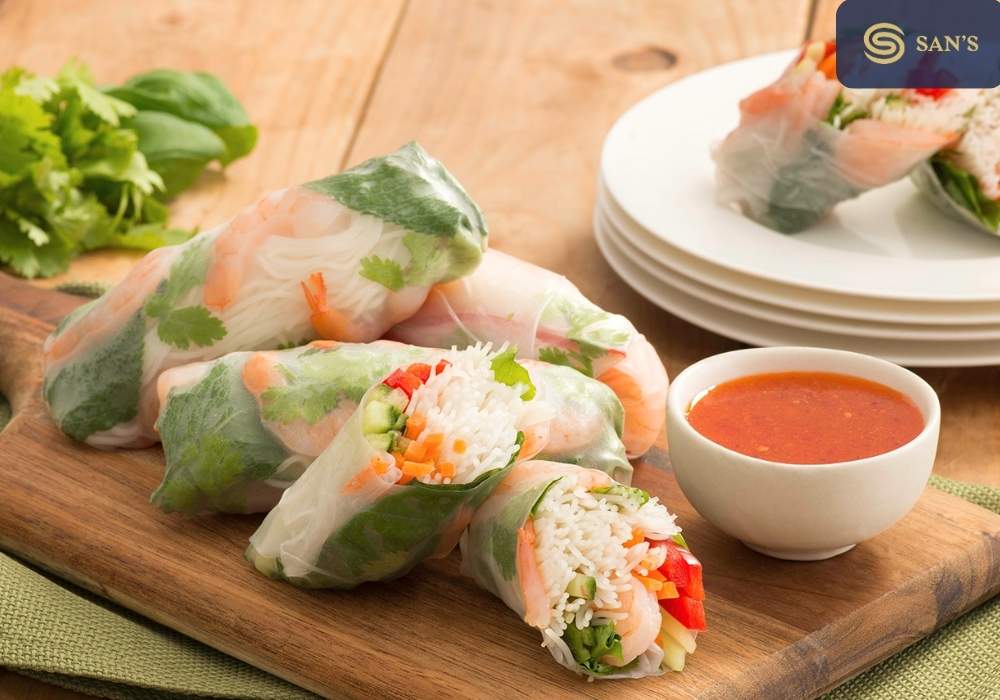
Spring rolls are versatile, allowing food lovers to savor them in various forms. While fresh spring rolls delight with their vibrant and crisp ingredients, fried spring rolls deliver a tantalizing crunch with every bite. Here’s a closer look at both methods:
- Deep Frying for the Perfect Crispy Spring Roll:
- Choosing the Right Oil: Neutral oils like canola, vegetable, or peanut oil are ideal as they don’t overpower the taste of the spring roll.
- Temperature Matters: The oil should be heated to around 350°F (175°C). Using a thermometer can be handy. If one isn’t available, you can test the temperature by dropping a small piece of the wrapper into the oil. If it sizzles and rises to the surface, the oil is ready.
- Avoid Overcrowding: Fry a few spring rolls at a time to prevent the temperature of the oil from dropping, which can make your rolls soggy.
- Achieving the Golden Color: Fry each spring roll for about 3-5 minutes or until they turn golden brown. Regularly turning them ensures an even color.
- Draining Excess Oil: Once fried, place the spring rolls on a wire rack or paper towels to drain any residual oil. This helps them stay crisp longer.
- Serving Fresh Spring Rolls: Keeping Them Moist and Ready:
- Prevent Sticking: Lay a piece of lettuce or plastic wrap between each spring roll when placing them on a plate or tray. This prevents them from sticking to each other.
- Moisture is Key: If you’re not serving them immediately, cover the fresh spring rolls with a damp cloth or paper towel to retain moisture. This ensures the rice paper remains soft and pliable.
- Presentation: Serve fresh spring rolls on a bed of lettuce or alongside colorful garnishes. This not only adds to their aesthetic appeal but also provides an added layer of freshness.
- Dipping Sauces: Fresh spring rolls shine when paired with a variety of dipping sauces. From tangy tamarind sauce to rich peanut sauce, offering multiple choices elevates the overall dining experience.
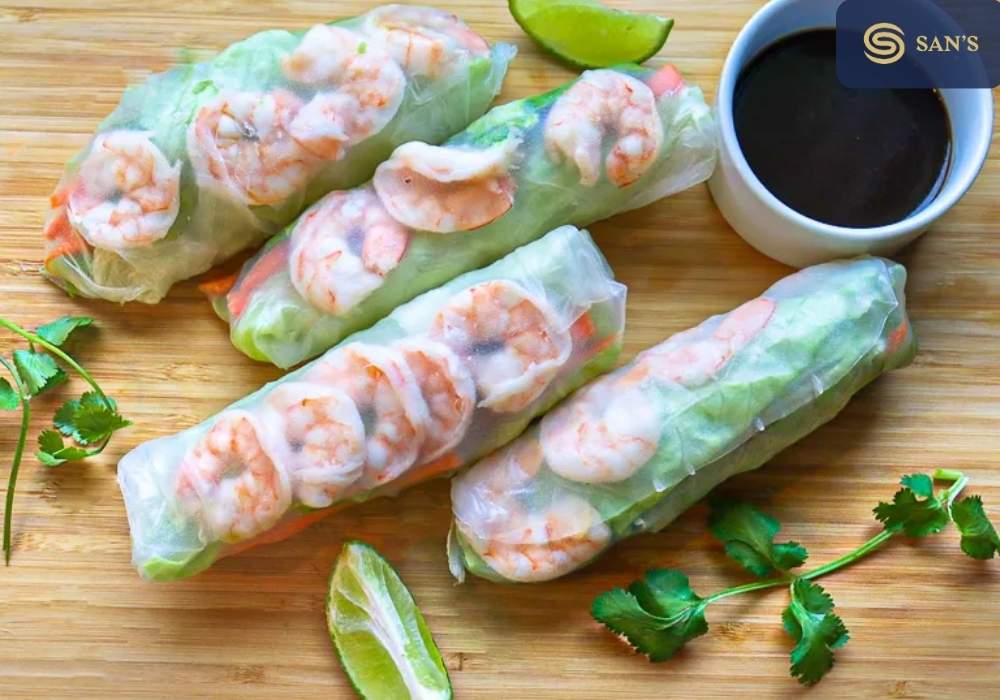
FAQs
- What can I use if I don’t have rice paper wrappers?
While traditional spring rolls use rice paper, you can use alternatives like wheat-based spring roll wrappers or even lettuce leaves for a fresh, low-carb option. - Can I make spring rolls in advance?
Yes! If making fresh spring rolls, they can be made a few hours ahead, but ensure they’re covered with a damp cloth to prevent drying out. For fried spring rolls, prepare the rolls and refrigerate, then fry just before serving. - What’s the difference between a spring roll and an egg roll?
Spring rolls are usually thinner and can be served fresh or fried, while egg rolls are typically fried and have a thicker, crispier wrapper. - Can I use a different protein apart from the ones mentioned?
Absolutely! While shrimp, pork, and chicken are traditional, feel free to use beef, duck, or even just an assortment of veggies. The idea is to enjoy the process and customize to your taste. - How do I store leftover spring rolls?
Fresh spring rolls are best eaten the same day. If you have to store them, place them in an airtight container, ensuring they don’t touch each other to prevent sticking. Fried spring rolls can be refrigerated and reheated in the oven to maintain crispiness. - Is there a vegan version of spring rolls?
Yes, replace the protein with tofu or tempeh, and use soy sauce or tamari instead of fish sauce. - My rice paper keeps tearing. What am I doing wrong?
It’s possible you’re soaking the rice paper for too long. It needs just a quick dip in warm water until it’s pliable, not overly soft. Remember, it continues to soften as it sits. - Can I bake the spring rolls instead of frying?
Yes! While frying gives a crispier texture, baking is a healthier option. Brush the rolls with a bit of oil and bake until golden.





